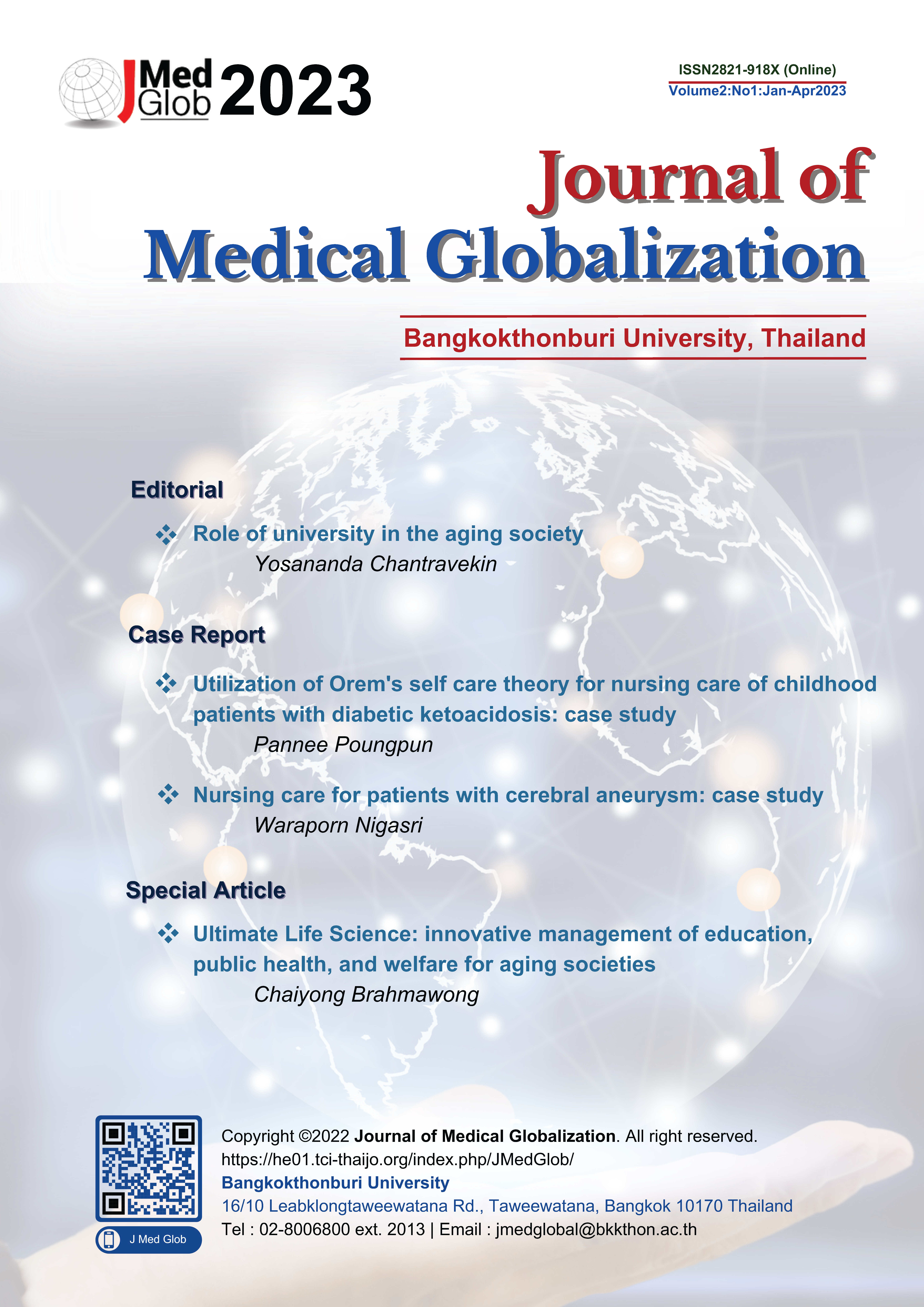Nursing care for patients with cerebral aneurysm: case study
Abstract
Cerebral aneurysm is a critical condition that causes high mortality and disability, resulting in less blood supply to the brain, leading to cerebral ischemia. From the case study of nursing care for a patient undergoing surgery for cerebral aneurysms in this case, it was found that patients with aneurysms needed to be diagnosed quickly and accurately. Close monitoring and evaluation of patients using the nursing process are necessary, as well as the correct assessment of neurological symptoms and providing coordination with multidisciplinary teams to ensure patients are safely protected from life-threatening conditions or those causing disability. The nursing care should be evidence-based and includes the reported changes of neurological crisis and vital signs, assessment of signs and symptoms of cerebral insufficiency and increased intracranial pressure, monitoring fluid and electrolyte imbalances, and patient’s rehabilitation for good quality of life. The family is ready to take care of disabled person after discharge from the hospital. This is an important role of nurses.
References
Suwanakkaradecha K, Kuwatsamrit K, Polpong P. Effectiveness of clinical practice guideline implementation for caring of patients with aneurysmal subarachnoid hemorrhage post craniotomy with clipping aneurysm. Thai J Nurs Mid Prac. 2018;5:75-93.
Waiyapat B. Case study: Nursing care for patients with cerebral artery aneurysms. J Prevent Med Assoc Thai [Internet]. 2018. [cited 2021 Oct 21];6:71-9. Available from: https://he01.tcithaijo.org/index.php/ JPMAT/article/view/156751.
Aurboonyawat. Advances in interventional neurosurgery and neuro-radiology in Thailand. Health system research institute (HSRI) [Internet]. 2014. [cited 2021 Apr 7];19:1-2. Available from: https://kb.hsri. or.th/dspace/bitstream/handle/11228/4093/Thaweesak_neurosurgery. pdf?sequence=2&isAllowed=y.
Changsap B. Anatomy1. 4th edition. Bangkok: Chulalongkorn University Printing House; 1979.
AMBOSS. ANEURYSM [Internet]. [cited 2021 Apr 7]. Retrieved from: https://www.amboss.com/us/knowledge/Aneurysm/.
Jiamsakul S. Prachusilpa. A study of nursing outcomes quality indicators for patients with neurosurgery. J Royal Thai Army Nurse. 2017; 18:147-54.
Punthumajinda K, Srisai M, Ocharoen S, Taecholan C. Basic neurosciences. 7th edition. Bangkok: Chulalongkorn University Printing House; 2558:176-8. 8. Rungsawang Y, ThongtanunamY. Cerebral aneurysm: nursing care. 7th edition. Nonthabuti: Yutharin Printing; 2017.
Kitbunyonglers S, Petpichetchian W. Nursing care of patients with cerebral vasospasm following aneurysmal subarachnoid haemorrhage: a case study. J Boromarajonani Col Nurs, Bangkok. 2019;35:24-35.
ANEURYSM Wongkarnpat [Internet]. 2021. [cited 2021 Aug 7]; Available from: http://www.wongkarnpat.com/viewpat.php?id=2475
Diringer MN, Zazulia AR. Aneurysmal subarachnoid hemorrhage: strategies for preventing vasospasm in the intensive care unit. Semin Respir Crit Care Med. 2017;38:760-767.
Ponglaohapun U, Wongwatunyu S, Khuwatsamrit K. Nursing activities and factors related to increased intracranial pressure in head injured patients. Rama Nurs J. 2009; 15:226.
Downloads
Published
How to Cite
Issue
Section
License
Copyright (c) 2023 Journal of medical globalization, Bangkokthonburi university

This work is licensed under a Creative Commons Attribution-NonCommercial 4.0 International License.








